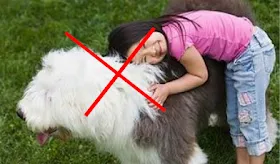The chemical in question, tetrachlorvinphos, or TCVP, is the active ingredient in Hartz brand flea and tick products, including Hartz’ Longlife 90 Day Collar, and in some livestock treatments.
In preparation for taking regulatory action, a decision prompted by a petition filed by the Natural Resources Defense Council in 2009, the EPA released a draft human health risk assessment and other documents last month. You can find them here.
In our view, EPA’s assessment is commendable – but long overdue. Scientists, regulators and manufacturers have known for years that insecticidal treatments are dangerous to pets and humans alike.
The chemicals block nerve signals in pets and humans just as they do in pests, potentially harming everyone in the process. These chemicals have been known to kill pets, particularly cats.
Children are also vulnerable, because their neurological systems are still developing and because they’re most likely to ingest pet pesticides by accident.
It’s not uncommon for a child to touch a pet, then put her hands in her mouth, consuming traces of pesticide.
A landmark NRDC study published in 2009 found that some pest treatments leave residues on animal fur that are up to 1,000 times the EPA’s acceptable levels.
A landmark NRDC study published in 2009 found that some pest treatments leave residues on animal fur that are up to 1,000 times the EPA’s acceptable levels.
These treatments put children at risk of cancer and neurological damage.
Between 2000 and 2006, the EPA banned six other types of organophosphates, but TCVP, a member of that highly problematic chemical family, has remained on the market.
Between 2000 and 2006, the EPA banned six other types of organophosphates, but TCVP, a member of that highly problematic chemical family, has remained on the market.
Carbamates, another family of harmful insecticidal chemicals, are still used in common flea and tick treatments.
The EPA moves slowly. Even if the agency decides to ban TCVP, more months or years may pass before products containing the chemical disappear from store shelves.
In the meantime, here’s what you can do today to keep your pets and family safe:
Take preventive action
Follow safety instructions
If you want to apply a topical treatment to pet fur, products with S-methoprene or pyriproxyfen are safer. Choose the proper concentration for your pet’s weight, and apply dog treatments only to dogs, cat treatments only to cats.
Read directions and warnings, wear gloves and wash your hands after applying.
Children and pregnant women should not apply treatments.
Keep kids away from treated pets
Separate kids from pets for 24 hours after applying a flea or tick treatment. Steer your pets away from places where your children play and sleep, including couches, play area carpets and bedspreads.
Monitor your pets and family
Contact your local poison control center (800-222-1222) and National Pesticide Information Center (800-858-7378) if you believe your pet or a family member has been harmed by a flea or tick treatment.
Monitor your pets and family
Contact your local poison control center (800-222-1222) and National Pesticide Information Center (800-858-7378) if you believe your pet or a family member has been harmed by a flea or tick treatment.
By Nancy Chuda, co-founder of Healthy Child Healthy World, and Megan Boyle
Images submitted by PNM



